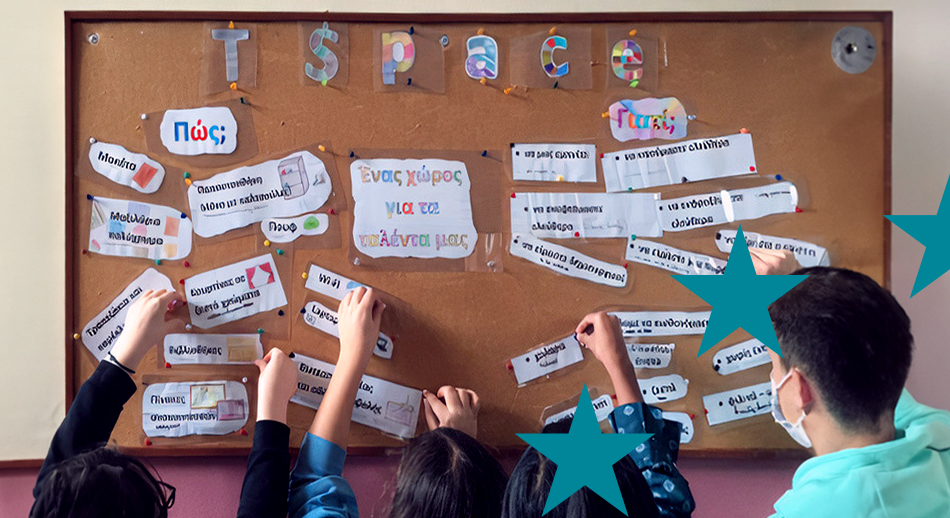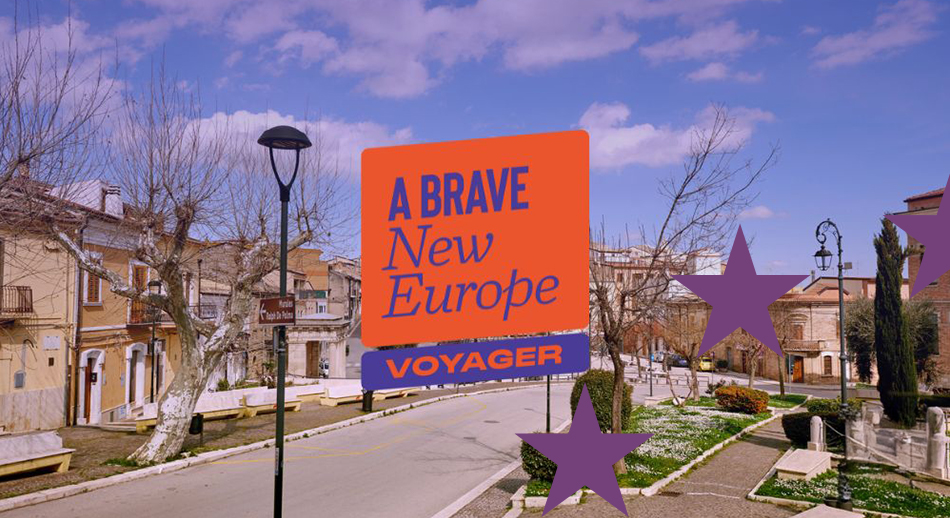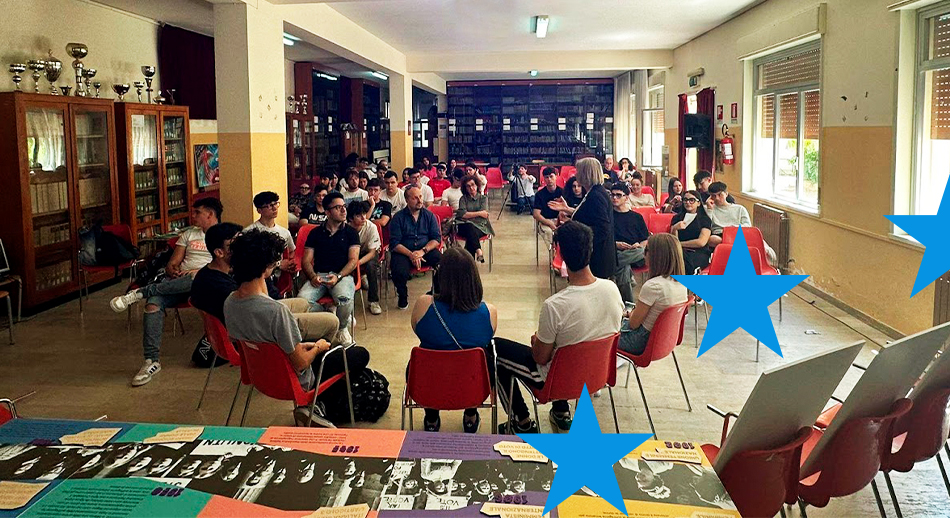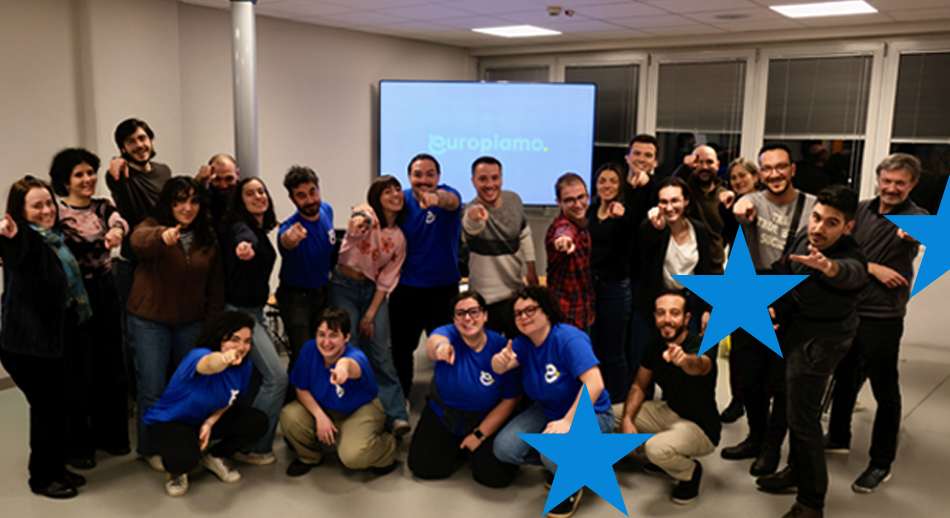We delve into the “history” of T-Space with a double interview. Simonetta and Irene now tell us about their journey and experience in EU projects and funding.
European is the first Europlanning Guide podcast series, available with one episode per week on all free audio platforms. Each episode is devoted to a place, a city, local, neighborhood dimension and its path to fit into the broader European context starting with common needs and innovative ways to cope with them.
Let’s delve into the “story” of T-Space with a double interview: we will talk with Simonetta Bruno, project designer and project manager at the Centro Formazione Professionale Cebano Monregalese, and Irene Miletto, education sector contact person at the CRC Foundation. In newly released podcast their voices guided us through the history of the project, their concept of “talent” and their approach to early guidance. Simonetta and Irene now tell us about their journey and experience in EU projects and funding.
Through what path did you approach European funds and europlanning?
Simonetta Bruno:
I have been working in the field of training design since 2008, and as a training agency we have always participated in regional and national calls for proposals. We have always looked at European planning as a world far removed from our small reality of small, concrete, and circumscribed activities. In fact, however, the ambition to participate in European projects has become increasingly present.
The first project in which we participated was in the area of mobility, orientation and program Alcotra ; with another colleague I had a wonderful experience in Chambery where we made contact with a high school that a decidedly innovative system of tutoring kids.
Subsequently, we approached mobility projects Erasmus for our children and experienced the excitement of seeing our students return from their experiences abroad transformed, more confident and aware of their potential especially from a personal safety perspective.
In 2016 and 2020 came our first projects, also funded by the Erasmus program, which saw us in the lead role of 2 groupings of 5 partners on a topic very dear to us such as school guidance.
We have subsequently joined as partners in other projects on the Erasmus+ program, Central Europe e Creative Europe ; the volume of work has grown and we now have 2 people within our staff dedicated to European planning and international project management.
Irene Miletto:
I am contact person for the education sector of the CRC Foundation and head of the Rondò dei Talenti, an innovative educational hub that, together with local organisations, works to serve young people.
In fact, I went back to European funds and europlanning-I followed a ‘path back’ to my roots. After graduating from Turin University with a degree in International and Diplomatic Sciences, I was a researcher, cooperator in development management in developing countries, EU project designer and trainer in project cycle management.
What European fund lines have you had the opportunity to work on and with what results?
Simonetta Bruno: As a training agency we work mainly on projects related to the Erasmus+ program because they allow us to bring innovation within our training staff and among our students.
We are currently awaiting the results of two Erasmus+ – Innovation projects submitted as lead partners to national agencies Indire e Inapp .
In response to some needs that have emerged from the local organisations, we have dedicated ourselves to the management of projects funded by the Central Europe, Creative Europe and Alcotra programs. Specifically on the Italy-France cooperation program, we prepared a project for two municipalities in our area, the Cebano area, which was not funded but which we intend to resubmit at the next deadline.
Also, in this last period, we are analyzing new programs such as Citizens, Equality, Rights and Values ( CERV ) e ESF+ – Employment and Social Innovation (EaSI) component.
Irene Miletto:
In my own journey, I have worked on archaic lines of European funds, particularly on direct initiatives such as Equal and the employment inclusion of vulnerable groups and women. I have worked as a designer and technical assistance to apply PCM to projects in an authentic and close-to-theory way: from problem tree creation, to objectives, to strategic choice…
After a few years I came back on European funds with Erasmus+, from school dropout to guidance.
What are the main difficulties you encounter in submitting projects?
Simonetta Bruno:
The main difficulties are those that belong to all large projects and are related to building partnerships and writing solid and coherent plans.
The search for international partners is always a delicate moment in project preparation because it involves not only identifying entities or schools willing to collaborate, but also building a relationship of shared intent and needs. Meetings at the planning stage are crucial, and extreme clarity of communication is necessary in the presentation of activity proposals; it is a delicate construction phase that often takes up a lot of time at the planning stage and needs to be well manned so as not to create misunderstandings or misinterpretations.
The drafting of the project takes place in parallel with the partnership composition phase and involves an excellent knowledge of the call and project rules. Another critical issue also lies in the writing skills of the various forms that often require clarity, incisiveness, synthesis and innovation. A nice mix of elements that is often condensed into a few characters and fields with limited character width!
Irene Miletto:
Unfortunately, the timing and practical needs of agencies do not allow for all the methods of analysis and design definition that would be beautiful and poetic to follow.
It is also somewhat difficult to fly high and with enthusiasm and passion in international projects and then have to return home and make people understand what exists beyond their own bell tower.
In addition, being very territorial has negative and positive aspects. On the one hand, bringing international experiences into very closed and local settings is not easy. On the other hand, getting to dialogue with the small lowland municipality of international experience is galvanizing.
What is most helpful to you when preparing European projects?
Simonetta Bruno:
When submitting projects, it is highly recommended to read the Guide to Europlanning, which provides information on calls and programs in a simple and up-to-date way; the simple and intuitive language brings one closer to the various materials, tools, ideas and experiences. Other key tools are the program guides that clarify objectives and presentation methods; also very important are the presentation meetings of the various programs because they allow direct contact with the program contact persons and enable a better understanding of the possible issues to be addressed. In contact meetings, it is also often possible to meet project partners willing to collaborate.
Irene Miletto:
I find much poetry in pure PCM theory. In presenting projects, it is difficult to make people understand that there is this creative and design poetry in the PCM method: it is a unique language that must be understood beyond the different terms used by different entities (project propose, purpose, specific objective, …).
Thanks to the references in the Guide to EU Projects and Funding, it is possible to show and share some diagrams and some steps of the method to understand the meaning and find the same language.
My professor of economic planning used to say that writing a project is easy: you just need to know how to write. I would add that you need to know the same language or find mediation between entities that plan to dream and write together.
What would you recommend to people who want to submit a project with European funds?
Simonetta Bruno:
The world of European design is very complex, I think it is very important to train yourself from a technical point of view before tackling the writing of a project.
The key aspect is to have a need that can be strong and well declined into goals and actions. Then the tools that help design must take over.
The Europlanning Guide is the first tool to consult because it serves to understand some basic points in the process of adapting the idea to the program.
Then the technical tools made available by the various sectors and agencies dealing with the calls are needed.
I think European design is a learning path: a project is not always funded on the first submission and, in many cases, it is useful to start by reviewing one’s mistakes by contacting evaluation referees to try to improve.
Listening and persistence in seeking improvement are the key elements in preparing a good project.
Irene Miletto:
To present projects, I suggest understanding well the difference between goals to be achieved and actions to be implemented, and being sure that you want to bring about an improvement in the lives of the beneficiaries.
I suggest starting with the real problems of the beneficiaries, talking about them with all the people involved, and putting them in order. Finding goals and strategies for action together with those involved, and only then dropping action ideas. Projects that aim to create actions and not improve the lives of beneficiaries are hollow and self-referential.




